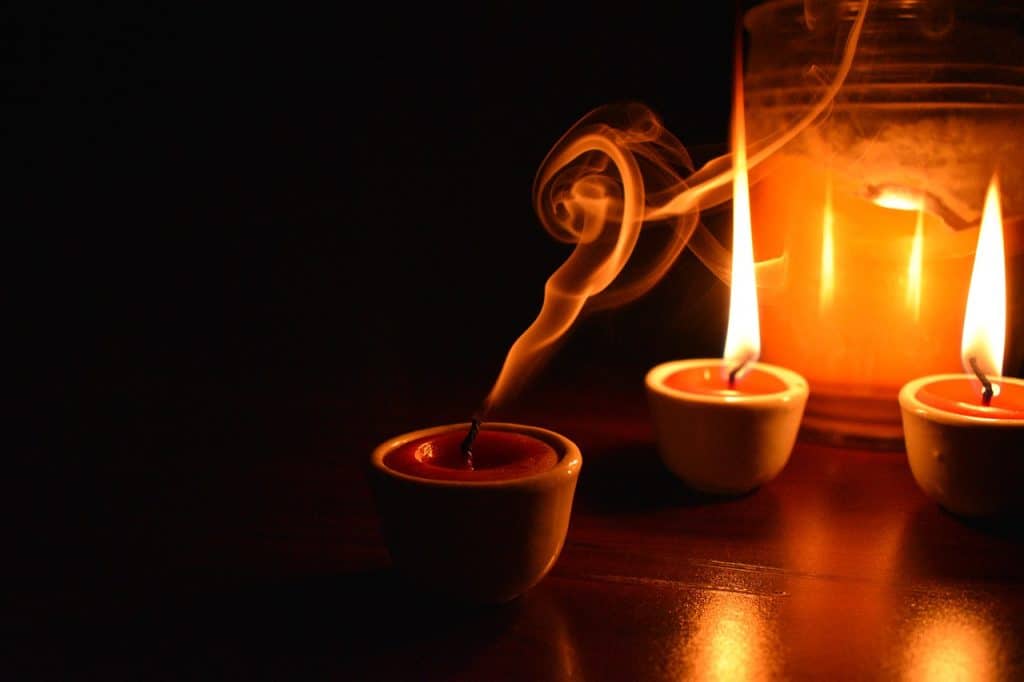People are becoming increasingly aware of climate change and global warming. This means that a lot of them – well, us – are beginning to rethink a lot of the choices we make in our regular, daily lives. Candle lovers, in particular, have begun to pay closer attention to the kinds of candles they burn and the effects or blueprints they leave on the environment.
Soy candles are made from natural materials. And this makes them suitable for candle lovers who are trying to reduce their carbon footprint.
SOY CANDLE MAKING
Soy candles can be formed using soy wax flakes and other materials such as; a wooden spoon, saucepans or metal bowls, thermometers, suitable wicks, a thermometer, scissors, fragrance or essential oils.
The following steps should be followed in the process of making soy candles:

- Melt your candle wax
The first step to making soy wax is to melt the soy wax flakes, which are the raw materials that are used by candle makers (particularly homemade candle makers), in making candle wax. To do this, add water into your metal bowl (until it is about 1/3 full) and put your soy flakes in. Heat the wax gently, under low heat and stir until it is soft and pourable. You can make one cup of melted soy wax using two cups of soy wax flakes.
This melted wax forms the basis of the entire candle making process, and so the quality of the soy wax flakes you use matter (you should get your raw materials and supplies from reputable stores). The consistency and properties of the melted wax you are able to produce also affects the quality of the soy wax candle that will be formed.
Tips that help this process go smoothly and efficiently include; preheating the metal bowl and stirring consistently.
- Put in the fragrance
After melting the soy wax flakes and attaining the right consistency, you should allow the wax to cool for a few minutes; until its temperature is about 120 degrees). When this happens, you are free to add in your fragrance. Stir consistently in order to ensure that the fragrance spreads through the entire wax supply.
The type of fragrance you select should be based solely on your preference. However, you should know that you must not reheat the melted wax, after adding in the fragrance. This is because fragrance is a volatile component that tends to be emitted faster when heat is applied. Under the action of heat, fragrance can be lost (and this would mean that the candle you would produce at the end of the process may not have a notable scent profile; its fragrance might be very faint).
Another thing that can affect the strength of a candle’s scent is the quality of the fragrance. You must purchase fragrances of good quality, from trusted and reputable candle supplies’ stores. And you must also make sure that the fragrance you choose to buy smells well, and that it has not expired (in order to produce excellent candles).

- Insert the wick into the container
After adding fragrance into your wax, you can begin to prepare your candle container. To do this, place a small quantity of candle wax inside the container (at the very bottom of it), and insert your wick into it; ensuring that it touches the bottom of the container. You can also use hot glue or super glue to ensure that the wick stays in place.
- Pour the wax into the container
Stir your wax again, to make it attain the right consistency (and that it is smooth). Following this, pour it gently and slowly into the container; you have to pay proper attention to do this well because when you don’t pour your wax into the container gently and slowly, you risk the occurrence of air spaces and other factors that can affect the quality of the candle.
- Allow the wax to cool
The best way to allow the candle wax to cool and solidify (which is the final stage of candle making), is to leave it alone after pouring in the melted wax and allowing it to cool overnight. By the next day, your soy wax candles should be ready for use (but first, remember to trim the wick to ¼ of an inch, in order to prevent tunneling and other problems).
PROBLEMS OF SOY CANDLE MAKING
Soy wax candles are fairly perfect as far as the candle making industry goes. However, there are some problems that tend to occur in soy candle making; many of which candle users experience. They include the following:
- Wet spots
Wet spots are the term used for spaces at the sides of soy candle containers, which are caused by the shrinkage of wax and air bubbles. The shrinkage and air bubbles form in soy wax when it is not poured gently into the container. However, it also occurs when soy candles are exposed to considerably high temperatures and subsequent cooling. And this can occur during storage or transportation, which means that wet spots can be very difficult to prevent; and that their occurrence does not necessarily signify a fault in candle making.
- Frosting
Soy wax has a very high tendency for oil crystallization, which is basically when soy oil tries to remove itself from the wax; under the action of heat changes. When this happens, a white portion is usually found on the body of the candle (and this is very visible on the bodies of colored candles). This whitening is known as frosting.
- Fragrance leaching
Fragrance leaching is basically a situation whereby fragrance seeps out of a (soy) candle, because its quantity is too much. It can also open when fragrance is added in at a very low temperature (i.e. when the candle wax is too cold).
- Cracking
Cracking in soy wax is caused by temperature changes, which affect the structure of the soy candle and leads to the development of thin cracks in it.
SOLUTIONS TO THE PROBLEMS OF SOY CANDLE MAKING
Many of the problems encountered in the production and usage of soy candles can be avoided when all processes involved in candle making are done at the right temperature. This also includes proper storage (at optimum temperatures).




